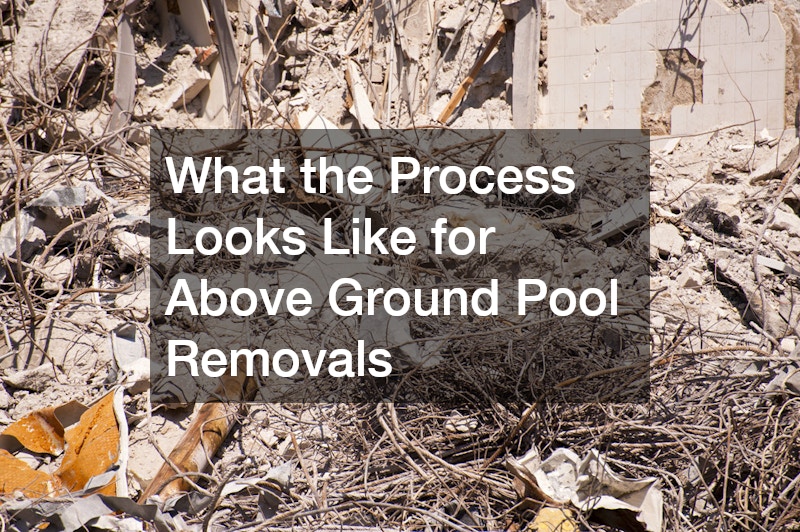Above ground pool removals are a significant undertaking for any homeowner, often necessitated by changes in lifestyle, maintenance challenges, or property upgrades. Whether you’re transitioning to an in-ground pool, renovating your yard, or simply eliminating an unused structure, understanding the process can help you prepare for a smooth and efficient removal. This article outlines the steps involved in above ground pool removals and what you can expect throughout the journey.
The first step in the removal process is to assess the current state of your above ground pool. This involves evaluating the pool’s condition, the surrounding landscape, and any obstacles that may complicate the removal.
Homeowners should take note of the pool’s size, type, and construction materials, as these factors can influence the overall removal strategy. Consulting with professionals who specialize in above ground pool removals is advisable, as they can provide insights into the best approach based on your specific situation.
Once you’ve made the decision to proceed with the removal, the next step is to drain the pool. This involves using a pump to remove the water from the pool, which can take several hours to a day, depending on the pool’s size and the pump’s efficiency. It’s essential to check local regulations regarding water disposal, as some areas have restrictions on draining pool water into storm drains or natural bodies of water. Ensuring compliance with local laws is crucial to avoid potential fines or penalties.
After the pool has been drained, the next phase involves disassembling the structure. This process typically starts with removing the liner, which can be done by cutting it away from the walls of the pool. The liner is usually made from a plastic material, making it relatively easy to cut. Once the liner is removed, the focus shifts to disassembling the pool’s framework, which is often constructed from metal or resin. Using the appropriate tools, such as wrenches and screwdrivers, professional contractors can efficiently take apart the walls and supports, preparing them for removal.
Following the disassembly of the pool structure, the next step in above ground pool removals is to safely remove the components from your property. Depending on the size and layout of your yard, this may require heavy equipment or trucks to transport the materials. It’s important to consider how the removal process will impact your landscaping and nearby structures. Experienced pool removal specialists will take care to minimize disruption and ensure that your yard remains intact throughout the process.
Once the pool and its components have been removed, the final stage involves addressing the site left behind. This may include filling in the hole where the pool was located, leveling the ground, and restoring the surrounding landscaping. The removal specialists may use dirt or other materials to fill in the area and then compact it to prevent settling. After the area is leveled, homeowners can consider re-sodding or planting grass to restore the lawn and blend the space with the rest of the yard.
In addition to the physical aspects of above ground pool removals, it’s important to consider the emotional impact of this decision. Many families create cherished memories around their pools, and saying goodbye to that space can be difficult. However, understanding that this change can lead to new opportunities—such as creating a new outdoor entertainment area or enhancing your garden—can help ease the transition. It’s essential to have a plan in place for how you want to use the space after the pool removal, ensuring that it continues to serve your family’s needs.
Finally, it’s crucial to choose the right professionals for your above ground pool removals. Researching local contractors, reading reviews, and asking for recommendations can help ensure you find a team that is experienced and reliable. A reputable company will not only complete the removal efficiently but also provide guidance throughout the process, ensuring that you are well-informed every step of the way.
In conclusion, above ground pool removals involve several key steps, from initial assessment and water drainage to disassembly and site restoration. By understanding the process and choosing experienced professionals, homeowners can navigate the challenges of pool removal smoothly. Whether it’s for aesthetic reasons, changes in family dynamics, or a desire for a new outdoor space, removing an above ground pool can pave the way for exciting new possibilities in your yard. Embrace the change and take the first steps towards a refreshed outdoor experience!
.
